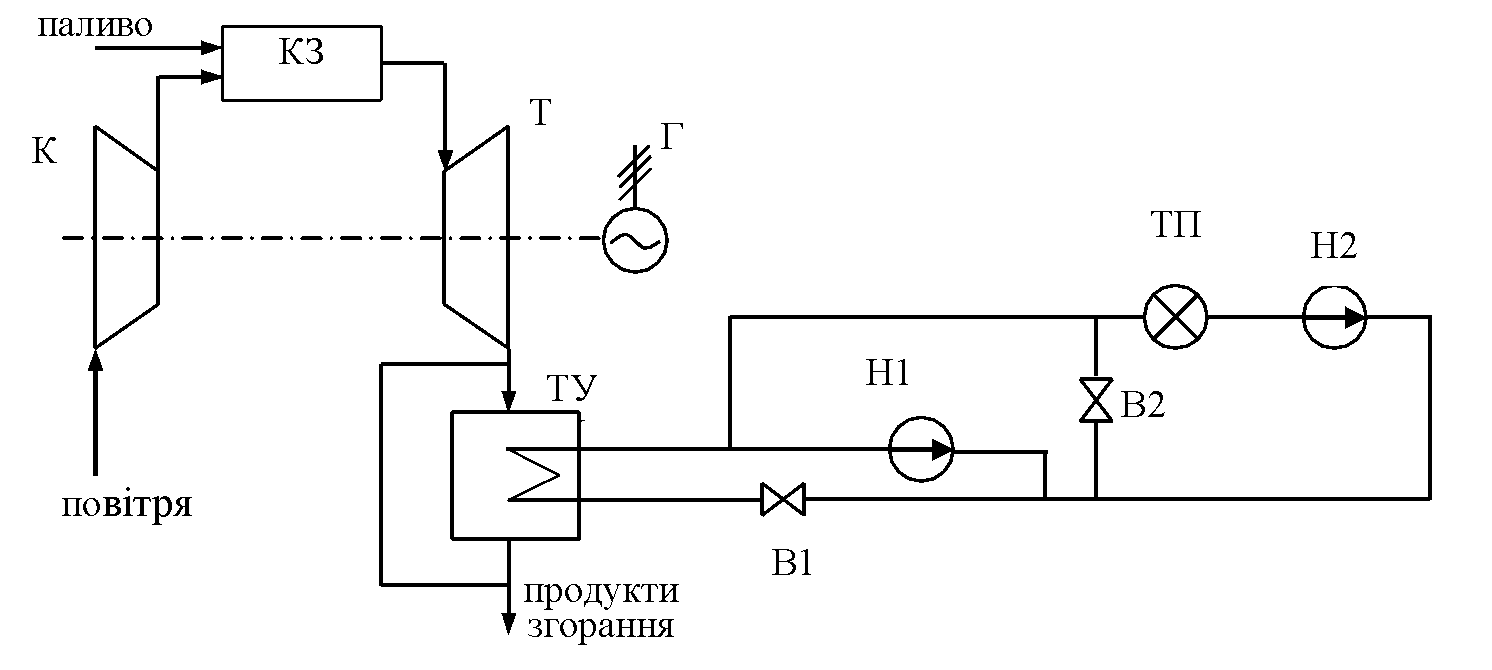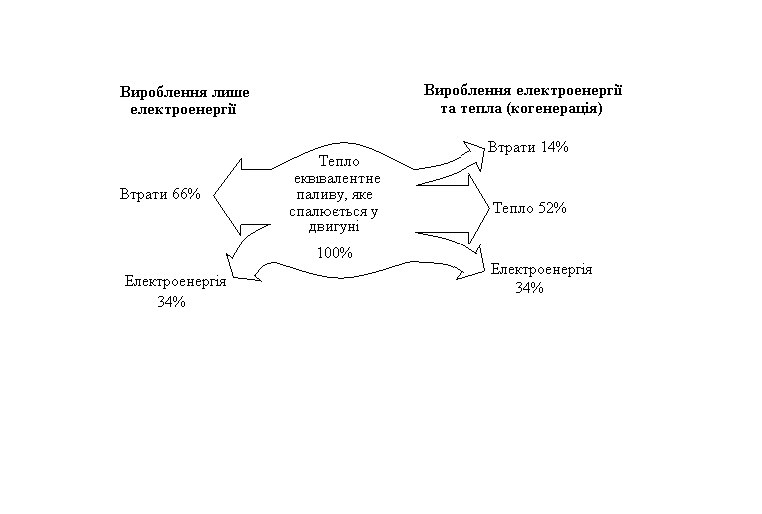Autonomous heat sources
Autonomous heat sources are sources of heat that are not connected to central heating systems. These sources are not connected to external heating networks and are often not fully autonomous, as they are connected to centralized systems for the supply of fuel (mainly gas), electricity and water. They serve a single house, a group of houses, and sometimes a small town.
Autonomous heat supply sources include low-capacity boilers, as well as gas-piston units and low-power gas turbines. Gas piston units and mini-CHPs based on steam turbine and gas turbine units are autonomous sources of both heat and electricity, i.e. cogeneration sources.
Natural gas with a methane number of at least 75 is used as the main fuel for gas-piston units. The use of associated, industrial gases and biogas is allowed.
Capital investments in cogeneration equipment are higher than the required investments in autonomous heat sources, but much less than in the construction of high-capacity facilities.
Cogeneration plants have a payback period of 3-5 years, while in large energy - more than 10 years. Today, cogeneration technology is one of the leading in the world, because it has the highest fuel efficiency, satisfactory environmental performance, and mobility.
For example, the share of cogeneration power plants in the energy sector of Denmark is about 60%, the Netherlands ~ 43%, Finland ~ 33%, Austria ~ 25% and so on.
In Ukraine, the cogeneration cycle, including existing CHPs, produces about 7% of electricity, Ukraine has a fairly large potential for the introduction of cogeneration technologies. Combined generation of heat and electricity in boiler houses allows to install up to 6 thousand MW of generating capacity, in industrial heat ~ 8 MW, and on the basis of the gas transmission system by cogeneration - to create up to 2 thousand MW of new capacity.
Cogeneration autonomous energy sources based on gas turbines and steam turbines have a large unit capacity (from 1.25 MW) and are therefore rarely used as local heat sources. At GTU CHP combustion products after expansion in the turbine are fed into the utilization heat exchanger, in which water is heated, or in the boiler-utilizer, in which water is converted into steam. The resulting hot water or steam is used in the heating system to provide heat to the consumer.

Scheme of heating GTU CHP
K-compressor; КЗ - combustion chamber; T-turbine; Г-generator, TУ - recycling heat exchanger; H1, H2 pumps; B1, B2 - valves.
The figure shows the scheme of GTU CHP with a recycling heat exchanger. The air compressed in the compressor is supplied together with the fuel to the combustion chamber. The combustion products rotate the turbine rotor, which is connected to the rotor of the electric generator. At the outlet of the turbine, the temperature of the combustion products is about 500 oC, and their heat is used to heat water in the recycling heat exchanger. The number of combustion products supplied in the technical specifications can be regulated. Pumps H1 and H2 provide water circulation in the circuits of the heat exchanger and heat consumer, and valves B1 and B2 allow you to regulate the flow of water through these circuits.
The unit power of gas piston units is significantly lower than in gas turbines, and their electric efficiency is significantly higher, reaching 40%. In such units, thermal energy is produced by utilizing the heat of the flue gases and the heat of cooling of the cylinder block and oil, but this makes the heat generation system quite difficult to manufacture and maintain. The share of heat produced is up to 50% of the heat obtained by burning fuel.
Comparative energy balance of cogeneration units

When designing cogeneration units, the main task is to generate electricity, and the heat produced in this case plays a secondary role. In this case, during the heating season there is a shortage of heat, which must be filled from additional sources. Most often, this issue is solved by installing peak boilers.
The most common autonomous source of heat supply at present is low-capacity water heating boilers. According to the location, they are divided into built-in, attached, separate, roof. Most often, they use gas or diesel fuel. Less commonly used local fuels are wood waste. During the operation of such boilers there are problems associated with flue, as each autonomous source requires the construction of an individual flue system, the relative cost of which gets higher the lower the power of the source.
Roof boilers have a great advantage because they can be installed not only on the roof or technical floor of buildings under construction, but also on existing ones. They do not require additional space inside or outside the house; fire safety of a construction in comparison with other options of placement increases; the risks of gassiness of floors disappear and the need to build high chimneys is eliminated, etc. At the same time the system of pipelines and heating devices designed for the centralized system of heat supply can be used. The problem of flue for roof boilers is not as acute as in other cases. When designing and installing roof boilers on existing buildings, the strength of building structures must be addressed.
One of the modern ways to increase energy efficiency is to create systems that allow full use of chemical energy of fuel. Low-temperature water boilers that implement this idea are called condensing boilers. Their implementation saves primary fuel and reduces CO2 emissions.
The advantage of a condensing boiler over a convection one is that the condensing boiler uses the heat of vaporization (condensation) of water vapor contained in the combustion products.
The cause of condensation is a drop in the temperature of combustion products below the dew point temperature (for natural gas combustion products tp = 52 ÷ 54 ° С), which depends on the return water temperature passing through the additional heat exchanger located behind the boiler or inside the boiler.
Autonomous heat sources that use electricity, such as electric boilers and electric heaters, require less capital costs and are easily regulated. Their main disadvantage is that they use expensive electricity. Their use is justified only in areas where there are no other energy sources or there is a surplus of electricity, as well as temporary sources (for example, during construction).
Autonomous energy sources include heat pumps, which are widespread in the world, by means of which heat energy can be transferred from a heat source with low temperature (0-25 ° С) - soil, air, water, etc. - to the receiver (consumer). ) with a high temperature (50-90 ° C) under the condition of supply of mechanical energy from the outside to drive the compressor (drive energy). The heat output (heat capacity) of a heat pump consists of two components: the heat received by the evaporator from the heat source, and the drive energy, by means of which the obtained heat energy rises to a higher temperature level. The types of heat pumps are absorption and compressor.
The energy efficiency of a compressor heat pump is evaluated by the ratio of heat output to the power consumed and is called the conversion factor.
Actual conversion factors can be 3-7, i.e. for 1 kW of power consumed you can get 3-7 kW of thermal power.
In many countries, heat pumps are the basis of energy saving policies. They are widespread in the United States, Canada, Denmark, Sweden, Germany, Japan and other countries. Ukraine has a high energy potential of low-potential heat, in particular, soil and groundwater, but does not introduce heat pumps enough.
The main advantages of autonomous heat supply systems are the possibility of individual regulation of heat load and the absence of expensive heat networks, which is one of the main sources of heat and heat loss. The disadvantages of such systems are the need for additional space for their installation, individual maintenance and repair, and the cost of the flue system.
